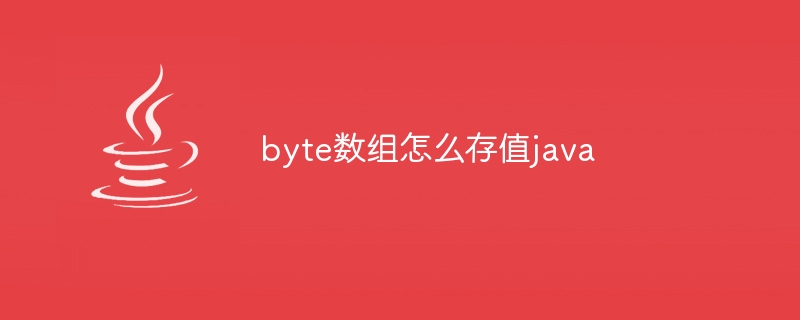byte数组怎么存值java
java 中的 byte 数组用于存储原始字节数据,下标从 0 开始。存值可通过直接赋值或使用 arraycopy 方法进行。具体步骤如下:直接赋值:声明并初始化一个数组,如 byte[] array = {0, 1, 2, 3, 4}。arraycopy 方法:使用 system.arraycopy(source, sourceindex, dest, destindex, length) 将另一个数组的数据复制到目标数组中。

Java 中 byte 数组的存值
概述
Java 中的 byte 数组是一种用于存储原始字节数据的容器,其下标从 0 开始。可以逐个元素地存取数组中的数据。
存值
可以通过以下两种方法在 byte 数组中存值:
-
直接赋值:
// 声明并初始化一个 byte 数组 byte[] array = {0, 1, 2, 3, 4};
-
使用 arraycopy 方法:
// 另一个 byte 数组 byte[] source = {5, 6, 7, 8, 9}; // 将 source 数组复制到 array 数组中 System.arraycopy(source, 0, array, 2, 3);
返回结果
上述代码执行后,array 数组包含以下数据:
[0, 1, 5, 6, 7, 3, 4]
注意事项
- 确保在存值前初始化数组,否则会导致 NullPointerException。
-
arraycopy 方法的语法为:arraycopy(source, sourceIndex, dest, destIndex, length),其中:
- source:需要复制的数组
- sourceIndex:source 数组中开始复制的索引
- dest:目标数组
- destIndex:dest 数组中开始放置复制数据的索引
- length:需要复制的元素数量
- 如果 destIndex + length 大于 dest 数组的长度,将抛出 IndexOutOfBoundsException。
以上就是byte数组怎么存值java的详细内容,更多请关注硕下网其它相关文章!
